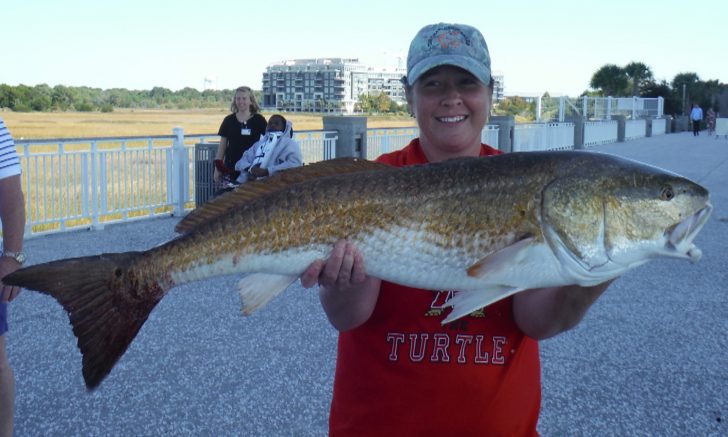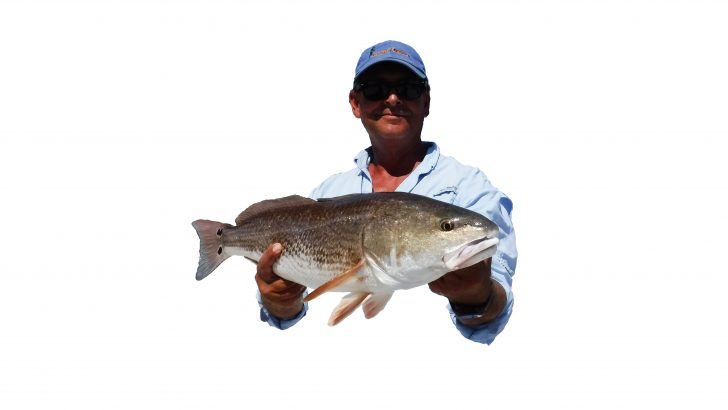It has long been a favorite of South Carolinian’s to target Red Drum through September and October. One of the main reasons for this attraction during these months is due to the fish’s traveling habits. As the water temperatures start to cool, Red Drum begin their reproductive activity. Large Red Drum will be on the move.

In large schools, they will roam the beaches, they will enter the harbors and they will move through the estuaries. These fish will range from 30- to over 40-inches long.
The males will be on the hunt for females, and the females they will be looking for will need to exceed approximately 33 inches and average about five years old because female Red Drum cannot spawn until they reach these criteria.
Anglers that are aware of the Red Drum’s visit through these few months are excited at the opportunity to get a picture with a trophy big Red, but I would like to remind everyone that Red Drum are a slot fish.
In other words, in order to keep a Red Drum, the fish must be between 15 and 23 inches, as of the month of September 2017.
This means that all fish exceeding the 23 inches must be released, and fish under 15 inches must be released. So, for those of you who have not had the opportunity to try your hand at landing one of these big, beautiful fish, I will try to aid you with some information that may help you.
“The first thing to know—what do Red Drum feed on?”
The first thing to know—what do Red Drum feed on? They feed on Shrimp (live or frozen), Mud Crabs, Fiddler Crabs, Finger Mullet (live or frozen), Mud Minnows, and one of my favorite baits to use is Pin Fish (live or freshly cut). As far as a rig goes, the Carolina rig is amongst the most popular used for these fish.
Popular rod and reel combinations are medium to medium heavy with 20- to 30-pound test fishing line. I personally like to use a medium rod and reel and from 15- to 20-pound test fishing line, only because I prefer a lighter tackle for the fight, but I am a seasoned, experienced angler.
I would not recommend a light combo for an inexperienced angler. It is not because of fear that one would lose one’s fish. It is for a healthy release of the fish. To help you better understand, I will quickly explain.
A large Red Drum has to be landed in a reasonable amount of time. If one cannot successfully land a fish quickly, the Red Drum may become exhausted to the point that the fish may not recover from its battle and reviving the fish may become impossible, causing the fish to die. This is not acceptable. Our goal as sportsmen is to successfully catch and release fish so they may reproduce, leaving fish for tomorrow.
Fishing from piers rather than beaches may require a landing net due to the height of the pier from the water, but the landing net in this case will also be used to revive and release the fish safely by lowering the Red Drum back into the water carefully, allowing him, while in the net, to regain his strength and then sinking the net below the fish, allowing him to swim off safely.
This technique is definitely required at the Folly Pier due to the pier’s distance from the top of the water. The Mt. Pleasant Pier is only 12 feet from the top of the water, but these large fish will still require a gentle release with a landing net.
Another word of advice—I recommend using a rod holder of some sort and remember to loosen your drag. These fish are powerful, and if your drag is not loosened and your rod is not in a rod holder, it only takes these beasts one blink of an eye to launch your fishing rod in the air and run away with it.
I have witnessed this on more than one occasion and have seen the expressions on individuals’ faces with their jaws dropped and their eyes bugged out, frozen in one minute of time, wondering what just happened and where did my rod go?!

The Carolina rig—DNR is recommending a large circle hook with the barb crimped off, but there is an assortment of hooks that an angler may use to target these fish. It all depends on which bait described above you are using.
Live Mullet and Mud Minnows may require a Khale hook, and there are Khale hooks with a circle barb design that can be used.
As far as your leader goes, I recommend between 20- to 40-pound fluorocarbon, around 18 inches in length. The egg weight used may vary in size, depending on the water conditions you are fishing in.
I hope this helps you have a great season hunting for your big Red Drum. Every September and October, I love to put up a show called, “Red Fish Rumble,” off of the Mt. Pleasant Pier.
If you’re out and about and find yourself there battling a Red Drum, you may end up on an episode of my YouTube channel “Fishing With Jiggin’ Jerry”.
If you’re interested in seeing some past battles, lookup “Red Fish Rumble” in my YouTube channel or go to www.jigginjerry.net.
Until next time, good luck out there and have fun fishing!


